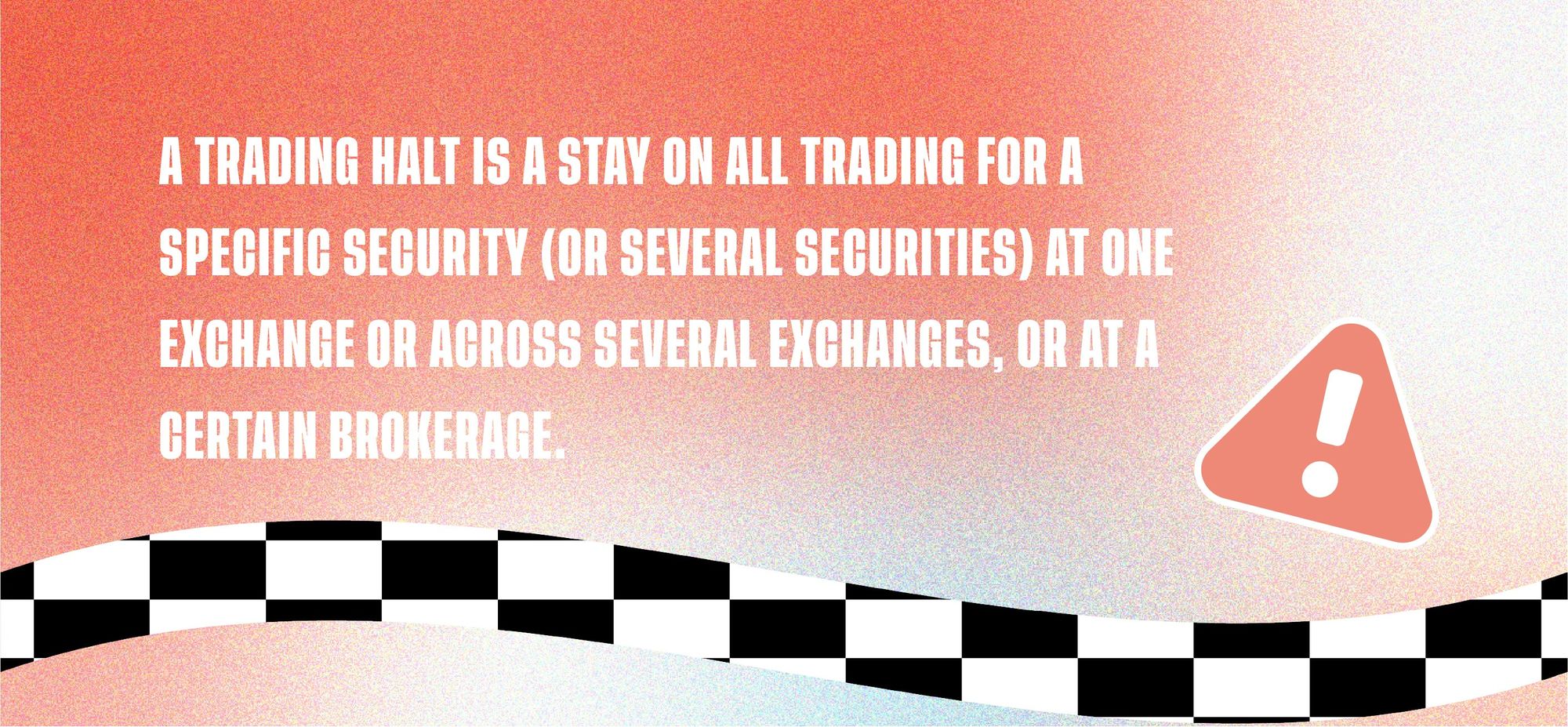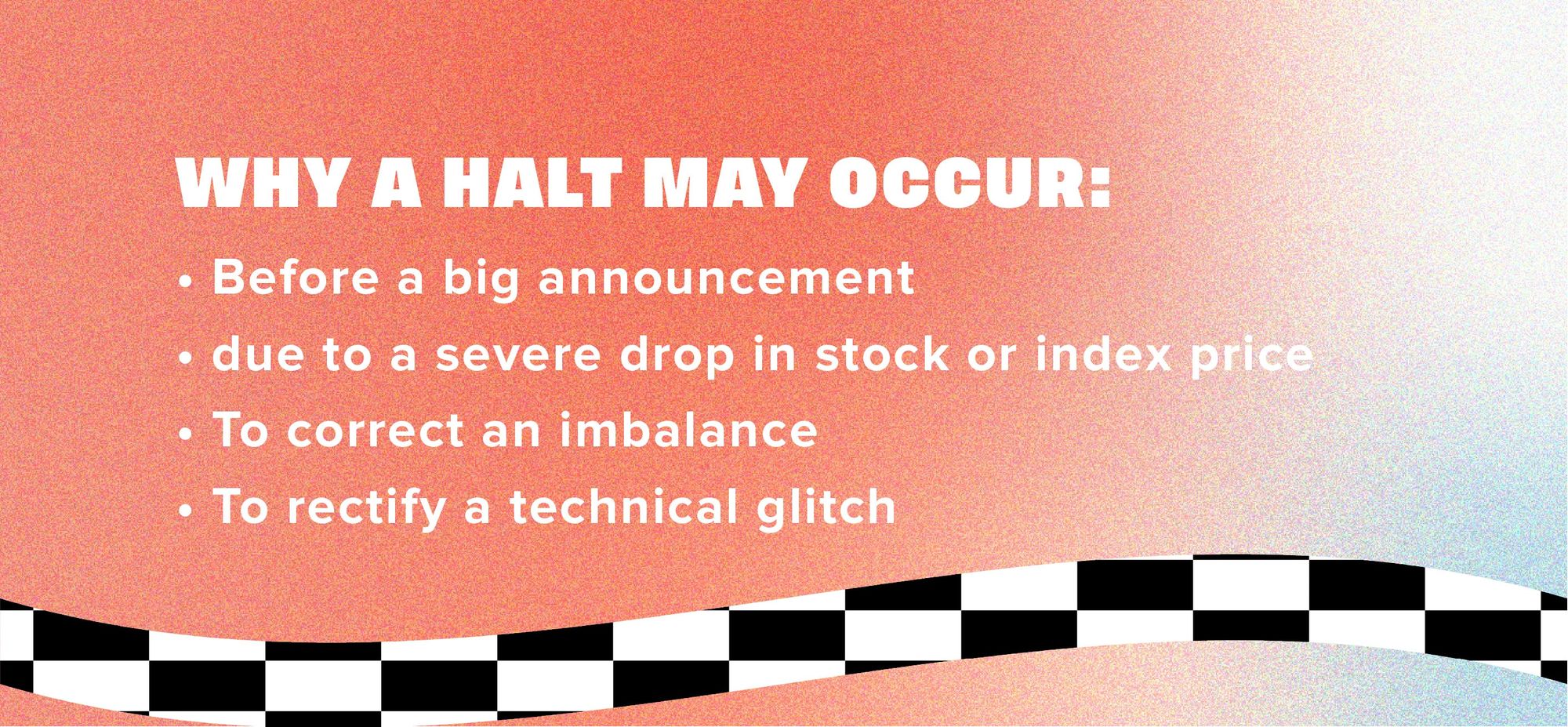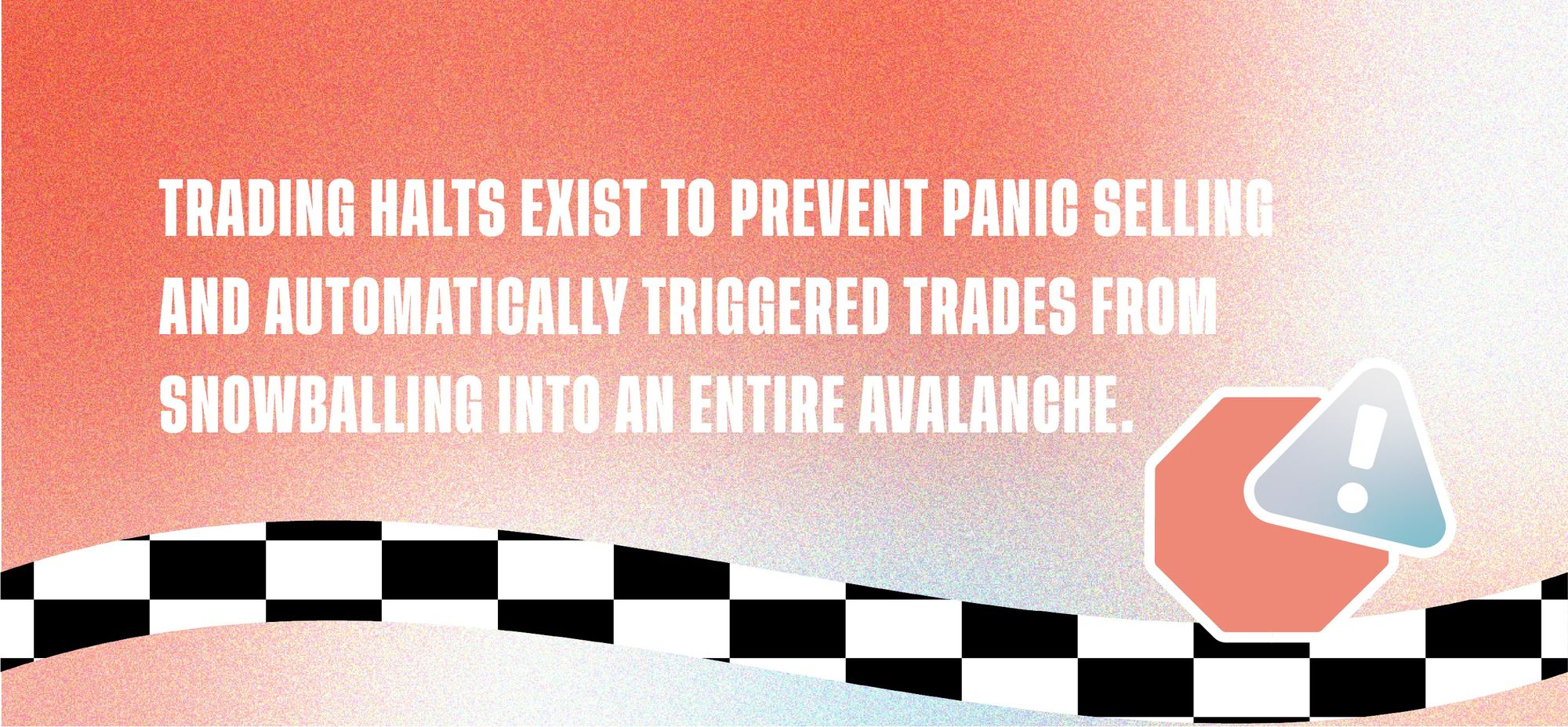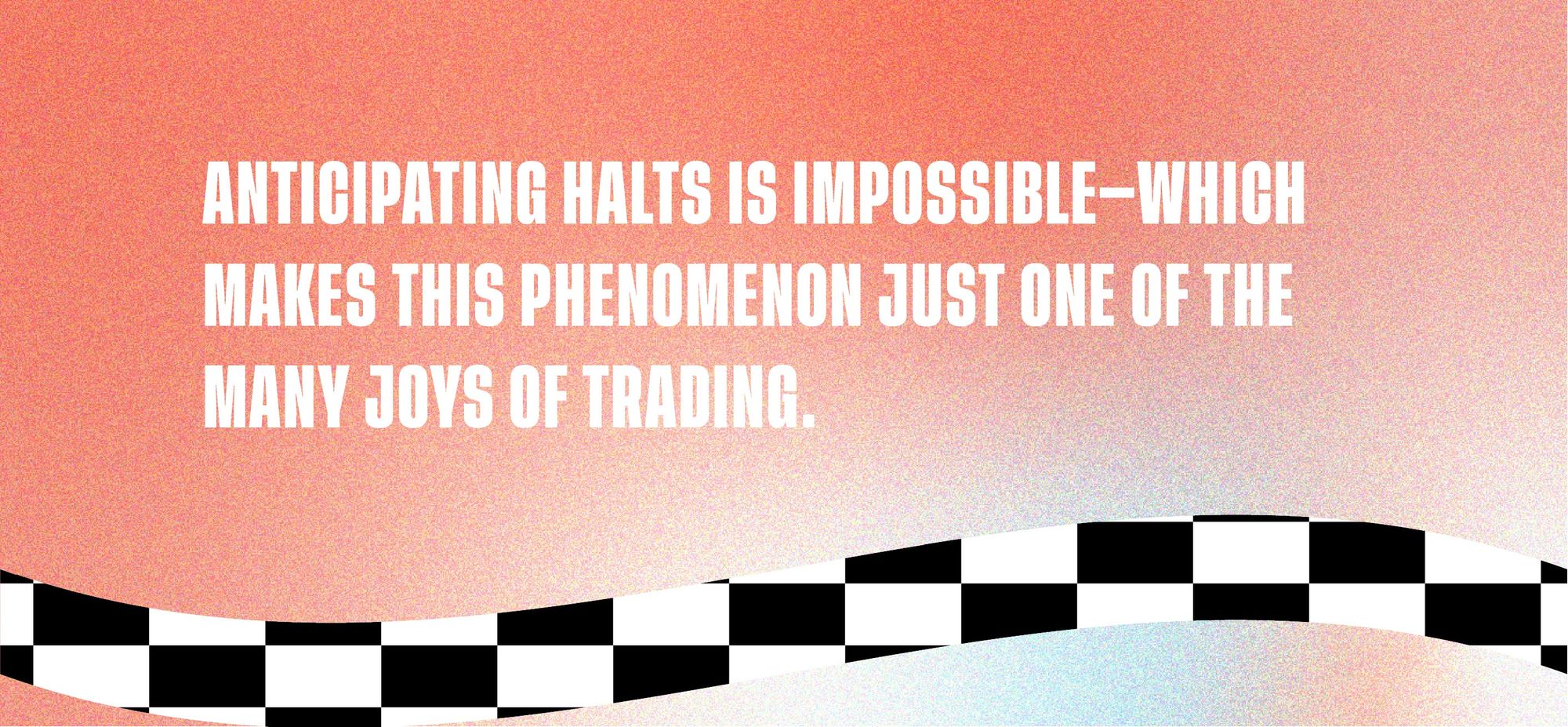What’s a Trading Halt?
Sounds spooky.
Remember when Gamestop stock (GME) was the lead story on every evening news program? When Redditors forced the share price up and then it fell all the way back down, destroying a few hedge funds?
And then remember how, in the heat of it all, brokerage apps like Robinhood started halting GME trades, first for a few minutes at a time, and then altogether?
And everyone freaked out, arguing it was because Robinhood was siding with Wall Street and not the “little guy”, despite purporting to serve everyone equitably a la, you know, Robin Hood?
Well, trading halts aren’t all that exceptional, and they usually occur with very good reason.
Let us explain.
What’s a Trading Halt?

A trading halt is a stay on all trading for a specific security (or several securities) at one exchange or across several exchanges, or at a certain brokerage.
When a trading halt is required, they’re triggered by the exchanges or brokers. They can be triggered automatically, or planned in advance. Some halts may last for only fifteen minutes, others may last up to an hour.
It all depends on the circumstances of the securities in question, the intention of the halt, and the entity that orders it.
When Do Trading Halts Occur?

Trading halts occur for a number of reasons. Namely, they may occur:
- Before a big announcement that seems likely to stir up emotional or panic trading on a given security;
- To correct an imbalance;
- In response to clearing firm costs at a brokerage;
- To rectify a technical glitch; or,
- Because of a severe drop in stock or index price.
Planned halts may be triggered at the very beginning of the trading day, in which case the exchange is said to be “held at opening”. Otherwise, automatically triggered halts can occur at any time of the trading day with the exception of those enacted in response to severe drops in stock or index price.
To trigger an automatic halt due to stock price decreases, certain criteria must be fulfilled. The stock or index must fall more than a given amount in a certain amount of time.
For example, if the S&P 500 falls 7% or more in a certain amount of time, an automatic halt is triggered as a circuit breaker to prevent undue drops in price. These halts may occur at the day’s opening (called “held at opening”, in this case), or any time before 3:25pm EST.
In the case of GME, the halt was enacted by Robinhood in response to increased clearing firm costs and a delay in settlement times, which increased during the trading frenzy (here’s a great explainer on clearing firm costs). Yep: they may not have had a choice but to halt trades of GME.
Why Do Trading Halts Exist?

Basically, trading halts exist in part because Wall Street can be really nuts.
If a particularly important index or stock starts to fall in price, investors can get spooked into a mass sell-off, which creates a snowball effect. This is called “panic selling.”
When investors panic sell, and everyone seeks to get out of the market at the same time, it can lead to a severe drop in global financial markets, and even stock market crashes like that which occurred in 2008.
Halts also exist to curb the effects of automatic trades.
Sometimes, when a given stock falls below or climbs above a certain price, they will set off automatic trades put in place by investors. This strategy is used for a variety of understandable reasons, but it can have a very adverse effect.
If a small wave of panic sellers drop an index price below the trigger amount, and a bunch of investors automatically sell, this can cause the trend to snowball into a full-on avalanche.

The problem is that some trading happens so fast, people can react emotionally. But when folks get freaked out and panic sell, the market could tank as a result.
So halts are like a little time out for the traders. Halts say “alright, we’re all going to have a little nap. And when we come back, we’re all going to behave. Right?” And all the traders mope and groan “fiiiiiiiine.”
In fairness, they’re allowed to be a little grouchy; halts aren’t always good for individual traders, and they can have negative impacts on a stock’s price. Plus, anticipating unplanned halts is impossible—which makes this phenomenon just one of the many joys of trading.
READ NEXT: What's a Bull Market?
This blog is provided for informational purposes only.